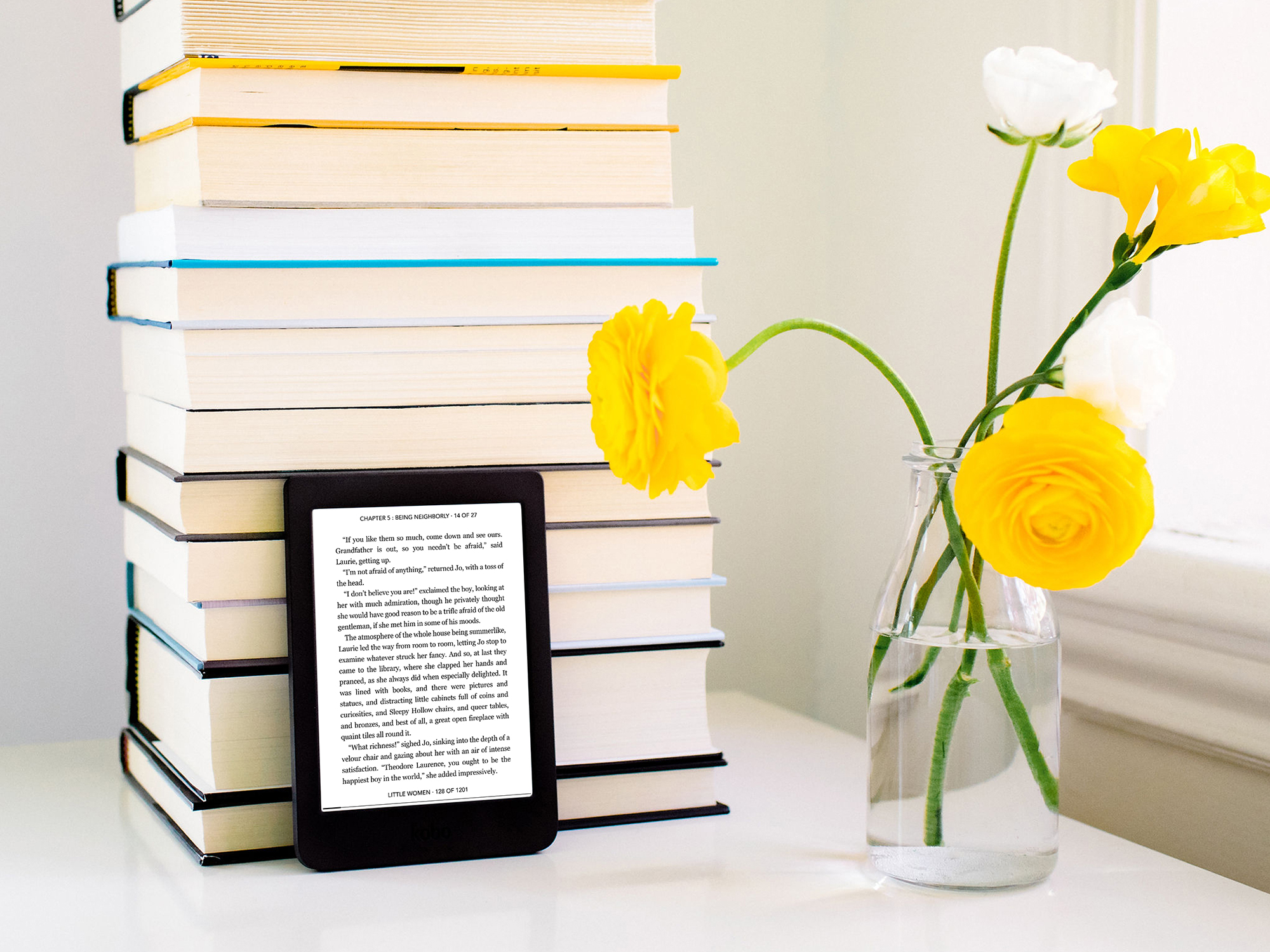7 fun features that you need to try on your Kobo e-reader
Supercharge your Kobo experience.

If you’re not convinced by the Amazon Kindle series of e-readers, the Kobo devices are excellent alternatives. As with Kindles, there are more features and functions hidden away on Kobo e-readers than you might have realized.
From saving words that you’ve looked up in the dictionary to adding custom fonts, knowing every last detail of what your Kobo e-reader is capable of can enhance your experience in myriad ways.
1. Press and hold
The electronic ink screens on Kobo e-readers don’t have the fluidity and speed of smartphone displays. But just like them, tapping is not the only thing you can do—you can also press and hold on various parts of the Kobo interface to bring up extra options.
While reading an e-book, pressing and holding will bring up the definition of the word you’ve selected, and enable you to add a note or mark a highlight in the same place.
The same trick also works when you’re browsing through the Home and My Books screens. Press and hold on a book cover to access Read now, View Details, Add to collection, Mark as unread, Mark as finished, and Remove options.
2. Turn on Large Print mode
Paper books often come with a Large Print edition. Kobo e-readers offer this as a dedicated mode for its main interface, but for now it’s only an experimental feature. From the front screen of the interface, tap Beta Features and then check the box labeled Large Print Mode. You’ll also get a slider that lets you set the font size to a specific percentage of the original.
[Related: This wacky-looking font can help you remember what you read]
This setting only affects the font used on the main interface, menus, and dialog boxes on your Kobo e-reader. The font size inside your actual e-books can be changed by tapping at the top of any page, tapping the Aa button, then adjusting the Font Size slider.
3. Add more fonts

You get 11 fonts included with your Kobo e-reader, but you’re not restricted to them. You can add more if you want to, including the Ember and Bookerly fonts used on the Amazon Kindle.
Connect your Kobo e-reader to a computer using the USB cable that came with your device, then launch File Explorer (in Windows) or Finder (in macOS), browse to your Kobo device, and create a new folder called “Fonts”. You can copy any font into this folder, and your e-reader should see them after a restart.
You can pick up a variety of fonts from numerous places on the web. Take a look at the MobileRead forums or this Good E-Reader guide to get started and find some downloads.
4. Change your navigation style
By default you can tap the left side of the screen to go back a page, the right side to go forward a page, and in the middle to bring up the reading menu. But your Kobo e-reader doesn’t have to stick to this configuration if you don’t want it to.
From the main home screen on your e-reader, tap More, then Settings and Reading settings. Scroll down, and you’ll see an option to change the on-screen controls—four different variations are available.
5. Install Calibre on your computer

Calibre is a fantastic and free e-book manager application for Windows and macOS, and it’s the perfect companion to your Kobo device. Some of the features include changing the metadata stored with your e-books (from the cover image to the series they’re in), converting e-books from other formats to work with your Kobo, and reformatting your e-books in terms of paragraph and line spacing.
[Related: Your e-reader can display more than just books]
To get the most from Calibre, you should install the optional Kobo plug-ins. Open the Preferences menu, then choose Get plug-ins to enhance Calibre. There, you can search for Kobo plug-ins using the box to the top-right, and once they’re installed you’ll need to restart Calibre for the changes to take effect. For more details, check the Calibre help guide.
6. Play games on your Kobo
You can play games on your Kobo, but you’ll need to unlock them first. Go to the Discover tab and search the store for “devmodeon”. Don’t worry if no results show up—you were not looking for anything, but enabling the developer mode for your device.
Go back to the home screen, then tap More and Beta Features. You’ll see a list of the four games you can play here: Sudoku, Unblock It (a sliding block puzzle game), Solitaire, and Word Scramble (where you find hidden words in a grid of letters). There’s also a Sketch Pad app for expressing your inner artist.
The games aren’t complex but they can help pass a few minutes of downtime. As you might have guessed, you can search the Kobo Store for “devmodeoff” to exit developer mode and hide the games again.
7. Save words that you look up
We’ve discussed long-pressing on a word in an e-book to look up its definition, and the dictionary popup also gives you links for looking up a the word on Wikipedia or the web at large. But for future reference, you can save a list of words you’ve looked up. At the time of writing, however, it’s only an experimental beta feature that you will need to enable yourself. From the front screen of the interface, tap More, then Beta Features, and check the box under My Words.
The next time you look up a definition, you’ll notice an Add to My Words option on the pop-up dialog. To see words that you’ve saved together with their definitions, from the front screen tap More, Activity, and My Words.
